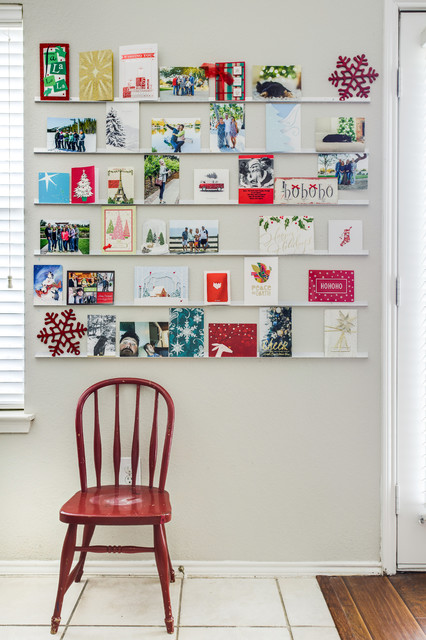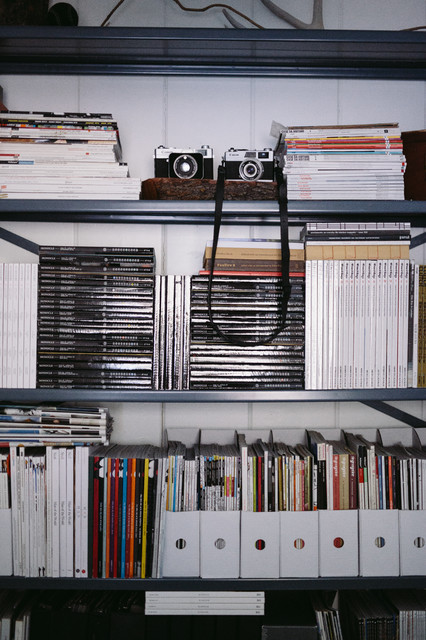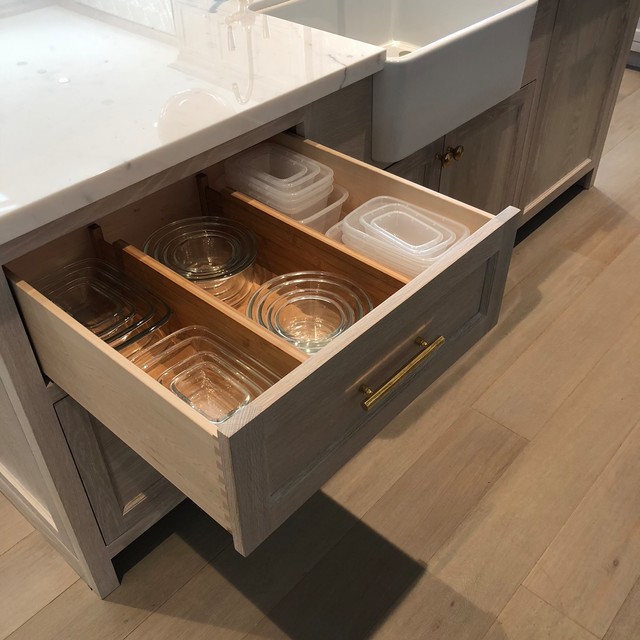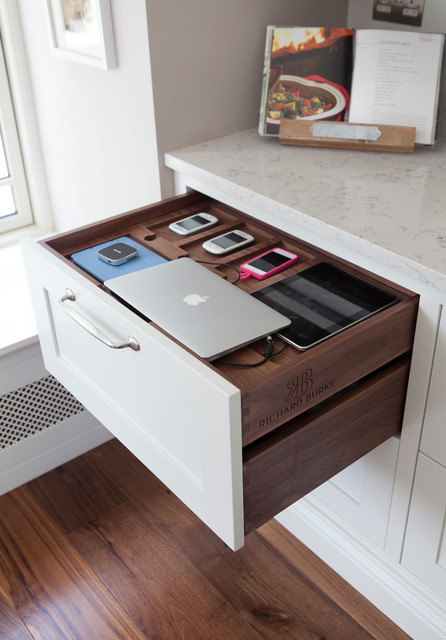
Each new year brings the promise of a fresh start, and after a long, hard 2020, many of us may be more ready than ever to embrace the hope that January brings.
Perhaps organizing your home is on your resolutions list for the new year. If you’d like to get started but don’t know what to do first, consider tackling one or more of these nine projects. Getting your house in order after the holidays can be a wonderful way to create a new beginning and a peaceful foundation at home.
1. Make Decisions About Holiday Cards
Once the holidays are over and you’ve enjoyed updates from family and friends, don’t let the cards and letters pile up on your counters. Decide what you want to do with them and follow through shortly after the holidays so you can reclaim your space.
If you like to keep photo cards, consider scanning and saving them digitally, then discarding the originals. Photos printed on paper materials can be recycled. However, photos that are printed on actual photo paper — these look like a photograph rather than an image printed onto a card or piece of paper — cannot be recycled. Neither can anything with glitter or metallic accents.
If you prefer saving the cards people send you, consider filing them in a photo box, either sorted chronologically with your photos from the past year or in a photo box designated for holiday cards.
Personally, I treasure and appreciate every card I receive each year. I savor them during the season by displaying them as part of my holiday decor. However, due to limited storage space, I keep only original photo cards from family and very close friends. The rest I archive digitally.
2. Declutter Your Wrapping Paper and Gift Bags
Making the most of your gift wrap can be a puzzle. Inevitably, you may end up with many pieces of paper that are too small to wrap typical gifts with but large enough that it feels wasteful to toss them. Sometimes papers like these, along with gift bags and tissue paper, end up unused and crumpled at the bottom of the gift wrap bin.
As you put away your wrapping supplies this year, take a few extra minutes to pull out unusable pieces to recycle or toss. And if you notice that you’re accruing more supplies than you can actually use, consider reducing your quantity, perhaps by sharing quality extras with a friend or donating them.
3. Get Honest About Gifts Received and Purchases Made
If you’ve been lucky enough to receive thoughtful gifts from family or friends and if you’ve been fortunate enough to be in a position to purchase items yourself this year, these new belongings may, by the end of the holiday season, change the equilibrium in your home. Decisions have to be made on where these new things belong.
To keep clutter at bay, try to find a permanent place for each new item as soon as possible. I’ve mentioned in previous articles and I would like to emphasize again that it’s OK to not like a gift you’ve received. It doesn’t mean that you don’t appreciate the gift or the efforts of the giver. But it does mean you have a decision to make.
If the gift is something you won’t use or if it doesn’t fit, release yourself of any guilt and consider exchanging or donating it. As someone who enjoys giving gifts, I can honestly say that if I miss the mark in selecting a gift, I prefer that my friends and family not feel obligated to keep something they don’t like.
That said, I am also sentimental and have kept many lovingly gifted items that would not have been my first choice. But I don’t hide these items away. I wear them or display them with pride, and inevitably, for me, they become treasures and part of my beautiful and unique patchwork life.
4. Clear Out Printed Materials You Don’t Need
The start of a new year also means the closure of the previous year. Soon you’ll be seeing tax documents in your mailbox. To avoid the chaos of sorting through stacks of papers during tax season, start clearing unnecessary papers now. As a start, consider eliminating:
- Newspapers and magazines. If you have subscriptions and haven’t kept up with reading your publications, they may start to accumulate faster than you can catch up. I suggest recycling all newspapers to date, as yesterday’s is already old news. With older magazines, if there are articles that interest you, consider tearing out just those articles and recycling the rest of the magazine. Then commit to reading your saved articles within two weeks. After that, recycle them, read or unread.
- Ads and catalogs. You may have saved coupons and catalogs while holiday shopping. Sometimes these end up in piles, untouched far past their expiration dates and season. Recycle them all. If there are some unexpired coupons you’re still considering using, take a photo of the coupon code to limit your paper clutter. Just remember to delete the photo after you’ve used it, so you don’t build up digital clutter!
- Your own holiday cards. I always order slightly more holiday cards than I need, just in case. After all the cards have been mailed and distributed, I keep four (one for each of my two daughters, one for myself, and one for good measure) and recycle the rest. I do keep a few of the envelopes to use throughout the year. If it feels wasteful to you to recycle perfectly good envelopes, contact your local schools, charitable organizations or letters-to-troops organizations to see if they’ll accept them.
- Receipts. Review any receipts you’ve been saving. Unless you need to keep them for specific reasons such as tax or insurance purposes, you may be able to recycle them (or shred them if they contain personal information). If the return window has closed or if you’ve already decided to keep an item, you may not have any need for the receipt. Keep in mind that if you’ve purchased an item online, all the information you need is probably contained in your account, making a paper trail unnecessary.
5. Eliminate Excess Food Storage Containers
The pandemic has changed the way people share food with family and friends. Baking and cooking are nice ways to show you care, but not everyone feels comfortable receiving homemade food at this time.
However, in a normal year, I’m spoiled by talented family and friends who give me delicious treats. This means I accumulate containers. To be sure their number doesn’t exceed my needs, I try to always offer them back to the giver, in hopes they can reuse them. Otherwise, I select a few that stack well and keep them with my party supplies (instead of in my main space) for guests to use to take leftovers home when I host. Of course, I haven’t hosted any gatherings in almost a year, but I have faith that we’ll be able to resume get-togethers in the future, and I keep the containers for that time.
Keeping extra plastic containers isn’t my first choice, but because I feel a responsibility to reduce the environmental impact of packaging, I try to give nonrecyclable containers a bit more life before sending them to the landfill. I don’t keep extra containers out of guilt, as this would merely be delaying the container’s fate without actually reducing, reusing or recycling.
If you’d like to help keep plastic containers out of the landfill by finding a new purpose for them, try your local senior center, church or pet shelter. Call ahead to learn their policies; these organizations may accept plastic containers, whereas the Salvation Army and Goodwill may not.
6. Let Go of Unneeded Pots and Vases
Through gifts received and purchases made during the year, I sometimes end up with extra vases and pots for plants. I’m very specific and passionate about the style I want to incorporate into my home. And now that I’m older, I’m able to be realistic about which items I’ll actually use. So I regularly go through my collection and pare down the ones I’m not in love with. These usually include most florists vases, excess duplicate sizes, pot liners, and pots and vases in colors I don’t like. I donate the excess items, knowing that someone else can enjoy them.
7. Pare Down Pajamas and Loungewear
Pajamas and loungewear aren’t typically at the top of my clients’ decluttering lists. In fact, this category often contains downgraded pieces that were rejected from other parts of the closet. As a result, this category of clothing can become quite significant in number.
If you have a large selection of pajamas and loungewear, consider paring it down. Think about how many sets you need to comfortably last between washings. With many people still working remotely and staying home more, loungewear may be on all-day duty. In my opinion, your clothing — even items you wear only at home — should be comfortable and also make you feel good about yourself. If you have many mix-and-match pieces, create a few sets and then consider donating the rest.
8. Pair and Winnow Your Socks
Sorting your socks may be a quick, painless activity if you have a small pocket of time. To get started, match up your socks. If even one of the socks in the pair has holes or thinned-out patches, I recommend you toss or recycle the pair (search online for local textile recycling options). Set aside all the single socks that remain and allow a few wash cycles to go by to see if the matching partners snuck into another load.
Donate pairs that are in good condition but don’t fit well, as well as any novelty socks you don’t use. And again, consider your wash routines to determine how many pairs you need to keep. If you have far more socks than you can use between washings, consider donating some, especially if your sock drawer is filled to the point of not closing well.
9. Declutter Your Cords
Most people have a plethora of cords in their home. It seems we’re afraid to get rid of them in case we might ever need them. But you probably have cords for items you no longer use or even own. I suggest a little detective work to identify which cords belong with your current devices and which ones have lost their purpose.
Electronics cords are considered e-waste and usually can’t be recycled in your weekly bin. Your community may offer occasional e-waste recycling days. Electronics retailers may also have e-waste recycling programs. Check your local resources to find out the best way to recycle unused cords.
And in the future, make it a habit to label your cords as soon as you get your device, so you’ll always know at a glance what the cord belongs with. This will also make it much easier to identify the matching cord when you’re ready to discard a device.









